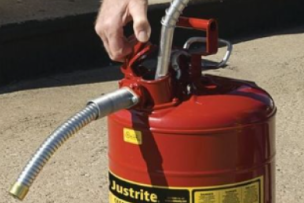Ansell is a global supplier of personal protection (PPE) equipment solutions designed for workers in a wide range of industries. Ansell's customers include businesses engaged in the Manufacturing, Agriculture, Healthcare and Scientific sectors, as well as many other business sectors. Ansell has developed a global presence that includes sales, operations and manufacturing sites in North America, Latin America, Europe and Asia and employs more than 15,000 people worldwide. Ansell's position as a market leader has evolved over more than 100 years of history and can be attributed to our history of providing innovative protection solutions to workers through a deep understanding of the worker experience.
A Guide to Finding The Right Chemical Protective Glove
With more than 60 million registered chemicals, finding the right chemical protective glove is not an easy task.
Selection of chemical protective gloves is often a challenging exercise. There are more than 60 million registered chemicals (reference: CAS registry). Many different chemicals and chemical mixes are used in a typical production process or production facility. Every unique set of chemicals requires specific chemical protection. Selecting the one best fitted chemical protective glove for your application is not an easy task and deserves particular attention.
Compromise
Chemical resistant gloves come in a wide variety of barrier materials, thicknesses and designs. Common materials used as coatings for chemical protective gloves are nitrile rubber, polychloroprene (neoprene), butyl, Viton, natural rubber or vinyl (PVC). Less known high resistance materials are LLDPE (barrier) or PVA (polyvinylalcohol).
Each of those barrier materials protects against a spectrum of chemical groups, and has also some “weak points”: chemical groups where the compatibility is weak or very weak. The perfect barrier material which protects against all chemicals and chemical mixes is virtually non-existent.
As such, a compromise will have to be made each time, coming to the best solution with your unique set of chemicals used in your application.
Your application might pose other specific comfort or mechanical needs beyond the chemical protection. For example, workers need a tactile glove, a glove with enhanced grip features or protection from heat; based on application or task.
THE PERFECT BARRIER MATERIAL IS VIRTUALLY NON-EXISTENT, LEADING TO THE NECESSITY OF MAKING COMPROMISES.
Permeation Breakthrough Times
The permeation breakthrough time is a theoretical indication of how long it would take a certain chemical to permeate through the glove, this in standardized (laboratory) conditions.
Since those conditions do not reflect the real workplace circumstances, the results can serve as a good guideline, however they can’t be interpreted as total usage times.
Permeation breakthrough times can however be very well used to make a distinction between different glove materials.
Ansell has a large database of permeation breakthrough times (test data or estimations) for both pure chemicals as well as mixes. When a Chemical Guardian™ chart is generated for gloves in the different Ansell formulations, a good visual overview of better performing materials can be obtained.
Whilst in most cases, a compromise needs to be made to come to the eventual glove selection, Chemical Guardian will help you to come to that compromise.
PERMEATION BREAKTHROUGH TIMES ARE THEORETICAL FIGURES AND SHOULD NOT BE CONFUSED WITH TOTAL USAGE TIMES APPLYING TO REAL CONDITIONS
THE SELECTION FUNNEL
The selection process to define the best suited glove for your chemical risks, can best be compared to a funnel.
Going through those subsequent steps, which each step resulting in more focus, will make sure all application specific parameters are taken into account, and will also prevent yourself from getting lost in an abundance of information.
The chemical guardian selection process takes all essential information into account and eventually provides a clear and comprehensible solution.
You receive a personalized chemical glove recommendation that specifically corresponds to each application and your unique set of chemicals.
Follow these four steps:
- Make an inventory of all chemicals used in your application. Select out of these the most commonly used chemicals on site, and add those that pose specific health hazards.
- Consult Ansell to help you with the visualization of permeation breakthrough times for your unique set of chemicals. The Chemical Guardian analysis will help you to choose the best suited glove material in the Ansell range.
- Then look at the application specific requirements and pick the best suited glove out of the already chosen glove material.
- A practice test will finally take place, alongside an assessment of the usage time in your application. Follow-up on correct usage and care of the product to make sure the selected glove continues to be the best match.
CONCLUSION
When going through the exercise of determining the best suited glove for your chemical risks, keep it a scalable and manageable project, by focusing on those chemicals that matter most in your application.
Narrow down by first determining the best suited glove material, and then towards the most suited specific glove for your specific application requirements, i.e. comfort or mechanical properties.
The Ansell Chemical Guardian team of chemical resistance experts will help you in this exercise with a visual report of expected breakthrough times, which will simplify the glove selection process.
ANSELL CHEMICAL GUARDIAN IS THE PERFECT MEANS TO NARROW DOWN ALL POSSIBLE OPTIONS AND SIGNIFICANTLY SIMPLIFY YOUR CHEMICAL GLOVE SELECTION PROCESS.
Visit MSCDirect.com to view Ansell products. For more technical information regarding chemical hand protection from Ansell, please visit https://www.mscdirect.com/products/ansell-chemical.
Brought To You By

More from Ansell
More on How-to
It is important to follow safe practices when using a safety can. Here, Justrite brings you five tips to avoid potential accidents.
Learn more about installing, cleaning and understanding the functionality of duct fans.
As businesses make plans to reopen, owners are forced to consider safety issues that wouldn’t normally arise, including how to store, transport and safely use hand sanitizer.








Talk to Us!
Leave a reply
Your email address will not be published. Required fields are marked *